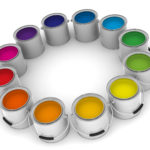
Back when I was growing up in the 1950s-1960s, we watched television shows after school during the daytime and at night, and it was a big part of our lives. We never thought about life before TV, or that it was not that long ago that families gathered around a radio to listen to stories and use their imagination, if anyone even remembers what that means.
Radio:
There seems to be a lot of debate as to who was/were the actual inventor(s) of radio and exactly when this occurred. However, several scientists and inventors made contributions to radio wave science in the 18th century, mostly in Europe.
Radio became popular with civilians following the war in the 1920s. By the 1930s, most of the publicly owned radios. People depended upon radio for both news and entertainment
Although radios are still widely used, many people stream music through the many platforms available now.
Music Formats:
The following is an approximate timeframe of the different music formats:
1948: Vinyl records were created which were played on a record player containing a needle or “stylus. Many older people or collectors still buy and use vinyl records.
I remember when we would buy our favorite songs on a “45,” which would play an individual song (probably over and over).
1963: Compact cassette tapes (cassette tape, audio cassette or tape), for recording and playing back audio, usually with a maximum capacity of either 30, 45 or 60 minutes per side.
1964: 8-track tape – Benefit over compact cassettes was that they held 8 soundtracks. 8-track players were offered in cars by Ford Motors Company. However, 8- track tapes were unreliable; they got stuck in the players and unraveled, didn’t last for any length of time, you were unable to rewind the tape, and let’s not forget the annoying loud click and hesitation right in the middle of a song. This was one of the things that seemed like a good idea at the time.
1982: Compact discs (CDs) were introduced which offer better sound quality with less background noise. CDs are still being sold today despite the various ways to stream and record music.
History of TV:
Electronic television was invented back in the 1920s. It wasn’t until approximately 1940 that CBS started participating in television by televising 15 minutes of news in New York City. Commercial television started and the main shows were the Ed Sullivan Show, Texaco Star Theater and Candid Camera. Some of us may have grown up watching some of these shows. Of course, it all started out in black and white. Some of us still occasionally like watching an old movie in black-and-white, either because it may seem nostalgic, or the lack of color adds to the charm. Colorization of old movies is repugnant to some people like my ex-husband and son, which sets them off into a rant which raises their pressure to an alarming level.
It wasn’t until the 1950s that TV became a household product. I Love Lucy, The Twilight Zone, Gunsmoke and Lassie came along. In approximately 1953, the first electronic color TV system was introduced, and the first color TVs were manufactured by RCA. However, programs had to be televised in color for this to be at all useful. It was not until around 1965 that color TVs became more affordable for families to purchase. Therefore, stations and networks started airing shows in color.
A big night or afternoon out was a visit to a local movie theater to see two movies and possibly cartoons in between as well. These days, there is no limit to what you can watch on your TV or computer as long as you’re willing to pay for either cable or an app for streaming.
“Stay tuned” for Part II in the next issue.



